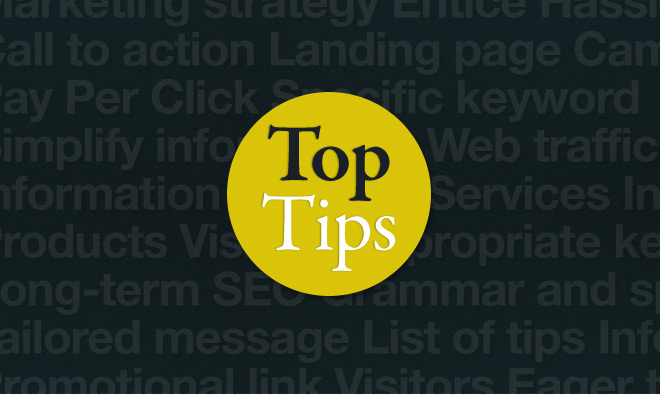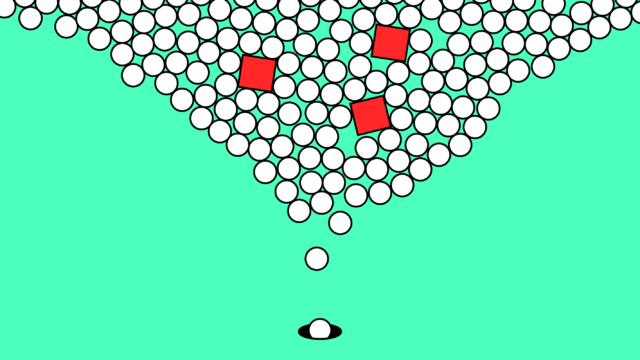How to Develop an Effective Landing Page
One of the most useful tools you can have in any online marketing strategy is a landing page for each campaign you develop. Landing pages inform and entice quickly and effectively, and when done properly are a successful way of converting web traffic into business. Because they perform such an important role, we’ve put together a list of tips on how you can make the most out of your landing pages.
Before we get started though, you’ll need to know exactly what a landing page is (and is not). Essentially, a landing page is a page on your website that visitors arrive on after they’ve clicked a promotional link for one of your products, services, or offers. These pages are focused on one tailored message and are created to inform visitors about the subject and provide a call to action. Unlike a general homepage, landing pages give visitors all the information they need about a topic without navigating through any more pages. They often follow email marketing and Pay Per Click campaigns, or can be built to target traffic for a specific keyword or geographic location.
1. Make the connection. Your landing page should immediately relate to the link a person clicked to arrive there. This can be done through repeating a headline or image found in the ad, mentioning the route they took to land on the page, or restating the general offer. This creates a cohesive message and signals to visitors that they’ve arrived at a page that will address their interest in the topic.
A landing page should pass the “blink” test, which means visitors should understand the general gist of the offer and its call to action within 5 seconds of arriving. If you have created a landing page for a Pay-Per-Click campaign, consistency may also affect how Google ranks your ad and your cost per click.
2. Create the right headline. Your landing page’s headline should be clear and simple, and encourage visitors to continue reading. Since visitors were interested enough to click through to the page, the headline’s main purpose is to reaffirm that they’ve arrived at the right place and remind them of the offer.
3. Write concise content. People have already shown their interest by arriving on your landing page, which means your next step is to explain the offer, show them its value, and inform them of the action they’ll need to take to get it. Simplify information with bullet points, include bold/italicised text where appropriate, and make sure to double-check grammar and spelling.
4. Include a contact form. The main goal of a landing page is to convert visitors into leads, and including a contact form will do just that. Keep your contact form short enough that people are willing to fill it out, but long enough to understand the quality of the lead. People are more likely to fill in basic forms, so we recommend just asking for their contact details and a question or two assessing the strength of their interest. You can always get more information when you contact them, so make the form as hassle-free and non-invasive as possible. At the end of the contact form, you may want to forgo the “submit” button for something a bit less committal. Studies indicate that “submit” buttons are much less successful than more tailored buttons like “Get your free quote” or “Contact Us”.
5. Keep the design simple. Because you’ll need to put across your key points quickly, you don’t want the design to overshadow the page’s content. Include images (and video) that are complimentary without stealing the spotlight. Additionally, include your contact form above the fold (the area visible without scrolling) so users instantly know what the call to action is. You should consider hiding the website’s navigation so visitors don’t get distracted and forget to complete the form. While your company logo should be shown on the landing page, the focus needs to be more on the offer itself than overwhelming corporate branding.
6. Don’t forget to include SEO. Make sure to include SEO techniques such as filling out your page’s meta-description, title, and alt tags, and selecting appropriate keywords. If you are using Pay-Per-Click to link people to the page, SEO will allow Google to determine the relevance of your ad and where it will be displayed. You’ll also be able to pick up some relevant web traffic from organic search results rather than have visitors navigate your entire site to find the information they are looking for.
7. Include a Thank You page. Once a visitor has filled in your contact form, redirect them to a Thank You page. This serves several purposes, including the fact that it will allow you to monitor how many conversions were made, as well as informing visitors that their form was successfully sent. This page is also useful because you can include other calls to action, for example the opportunity to sign up to your email newsletter, follow you on social media, or visit the rest of your website. With people eager to seek out your business, it would be a shame to let that go to waste.
8. Follow up. Although it may seem obvious, sometimes businesses forget to follow up with inquiries made from their landing pages. You may even want to send an automatic email that responds to the person immediately after they’ve filled in the form. This will assure them that you’ll be in touch soon and should give them links to other products, services, and offers they may be interested in.
9. Continuously evaluate the landing pages. Ideally you’ll want to create two versions of each landing page so you can test which one works better (this is known as A/B testing). Even slight changes can make a difference in converting business so the more tests you run, the better off you’ll be. Additionally, check your Google analytics regularly to determine if your landing pages are receiving the right kind of traffic and how visitors interact with the page.
10. Develop an “evergreen” offer. Landing pages tailored towards long-term use are ideal because they will be relevant and bring in leads for a long time. If you do have a landing page that expires (for example those for contests, seasonal campaigns, etc), make sure to take them down after that time. This will prevent visitors from arriving to a page, filling in a form, only to find out later that the offer no longer exists.
These tips should help you create successful landing pages that will convert visitors into business leads. If you’ve got any other tips on how to improve landing pages, feel free to add them in the comments section below.
For more information on how we can help you with web development or online marketing, please contact Cite today.




